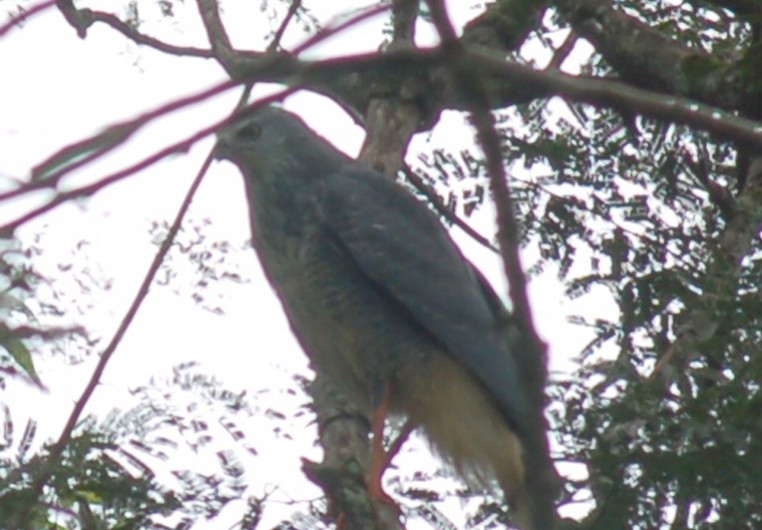Biodiversity
 Crane hawk
Geranospiza caerulescens | Vieillot, 1817
Crane hawk
Geranospiza caerulescens | Vieillot, 1817

Characteristics: from the (Greek) geranos = crane; and spizias = falcon, hawk; and from (Latin) caerulea = blue. This is a large species, measuring 38-54 cm in length and with a wingspan of 76-111 cm. Its legs are long and reddish, a characteristic of the species. This bird can also bend its legs forward to some extent, as other species also do. Its head and beak are relatively small and slender compared to its long body and tail. The color of the body is predominantly light gray, its wings, tail and the lower abdomen are lighter, with fine white stripes on the sides. The base of the tail is white, and the tail is black, with two white stripes.
Distribution: It occurs from Mexico to Argentina and Uruguay, including throughout Brazil, in all biomes.
Habitat: This bird may occur in any type of habitat, such as wet and seasonal forests, dense savanna and scrublands, fragments of forests in regeneration, sometimes in eucalyptus stands merged with native vegetation or wetlands such as swamps, mangroves, and Moriche palm plantations.
Habits: Diurnal. This bird scours cavities in hollow and palm trees or among bromeliad leaves.
Diet: It captures bats in their diurnal sleeping spots, as well as lizards, geckos, iguanas, snakes, frogs, toads, earthworms, and other mammals that hide in hollow trees. It also catches cicadas, beetles, amphibians, and reptiles in bromeliads. It follows fires, either alone or in pairs, capturing frightened prey on the ground. It follows herds of capuchin monkeys, which have a habit of defoliating bromeliads to eat the tender whitish base of the leaves, thus displacing arboreal snake and amphibian species from inside them, which then become easy prey.
Breeding: This bird builds dense cup-shaped nests of twigs and thin branches tall trees, usually on in terminal branches, but sometimes hidden among epiphytes. They lay about two eggs, with an average hatching period of 35 days.
UFRA: In the studies carried out at UFRA areas, this species of bird was only seen in wetlands with riparian forests, thus it had a restricted spatial distribution. The species is considered rare because it was recorded only once.



